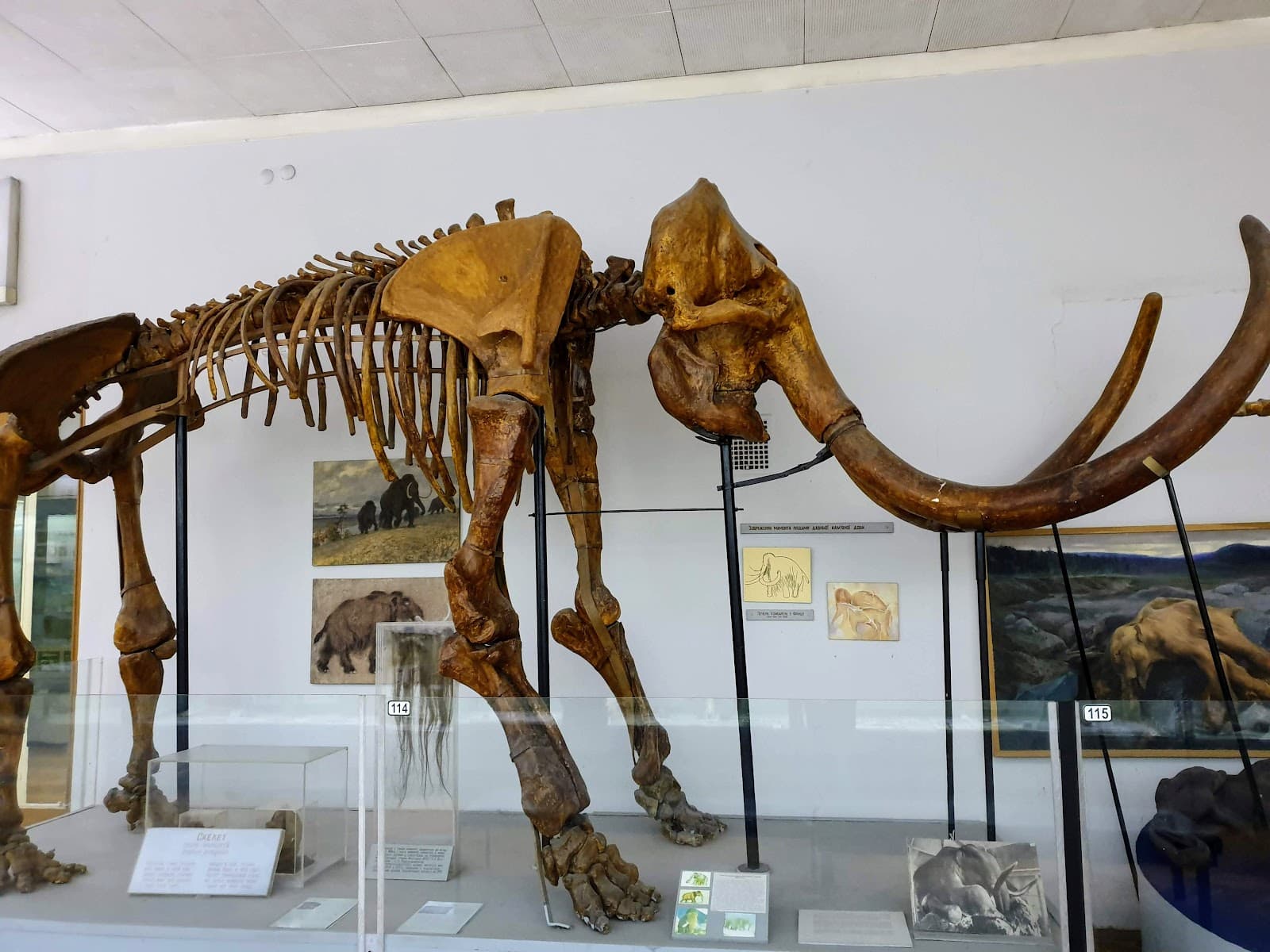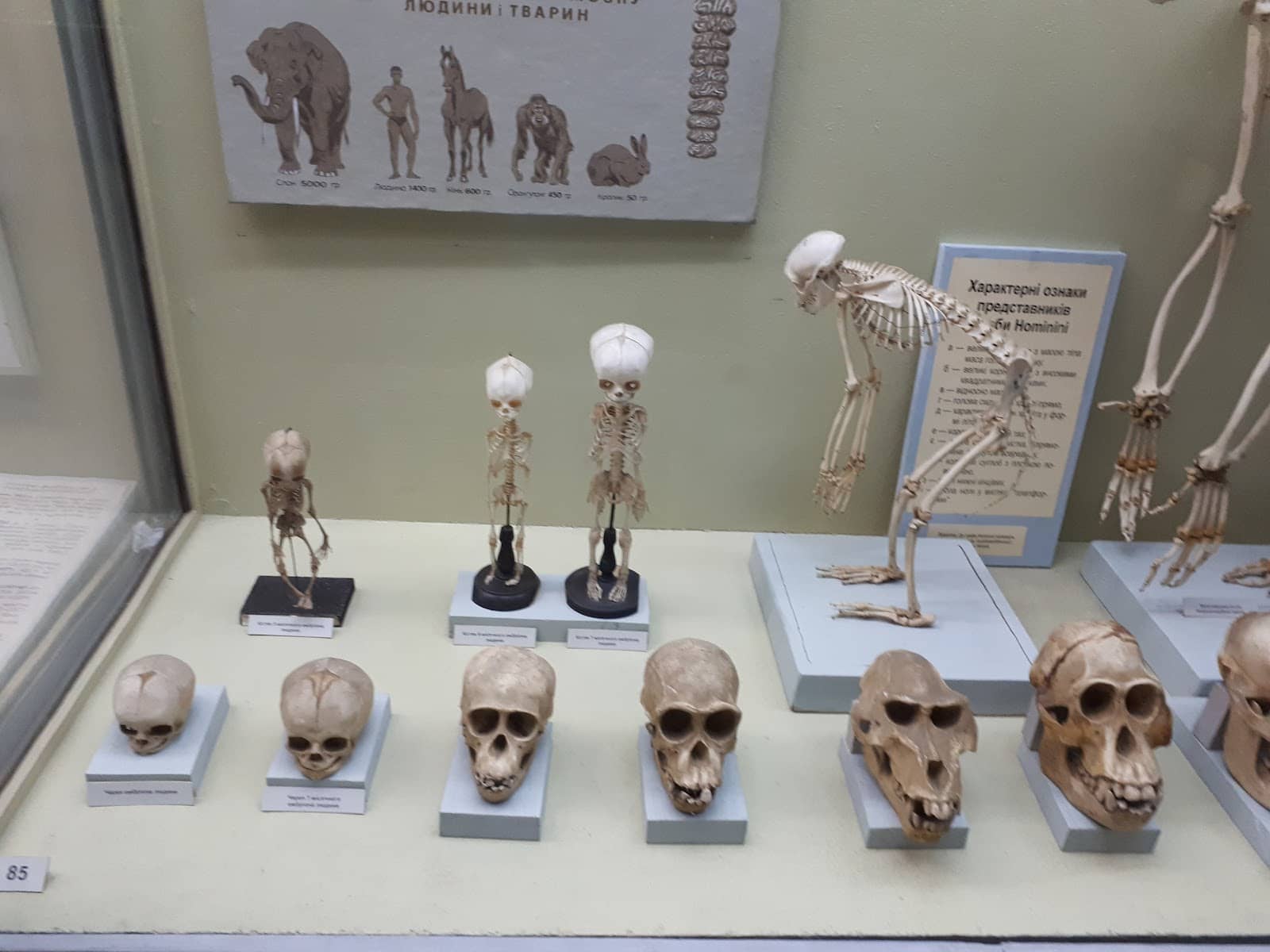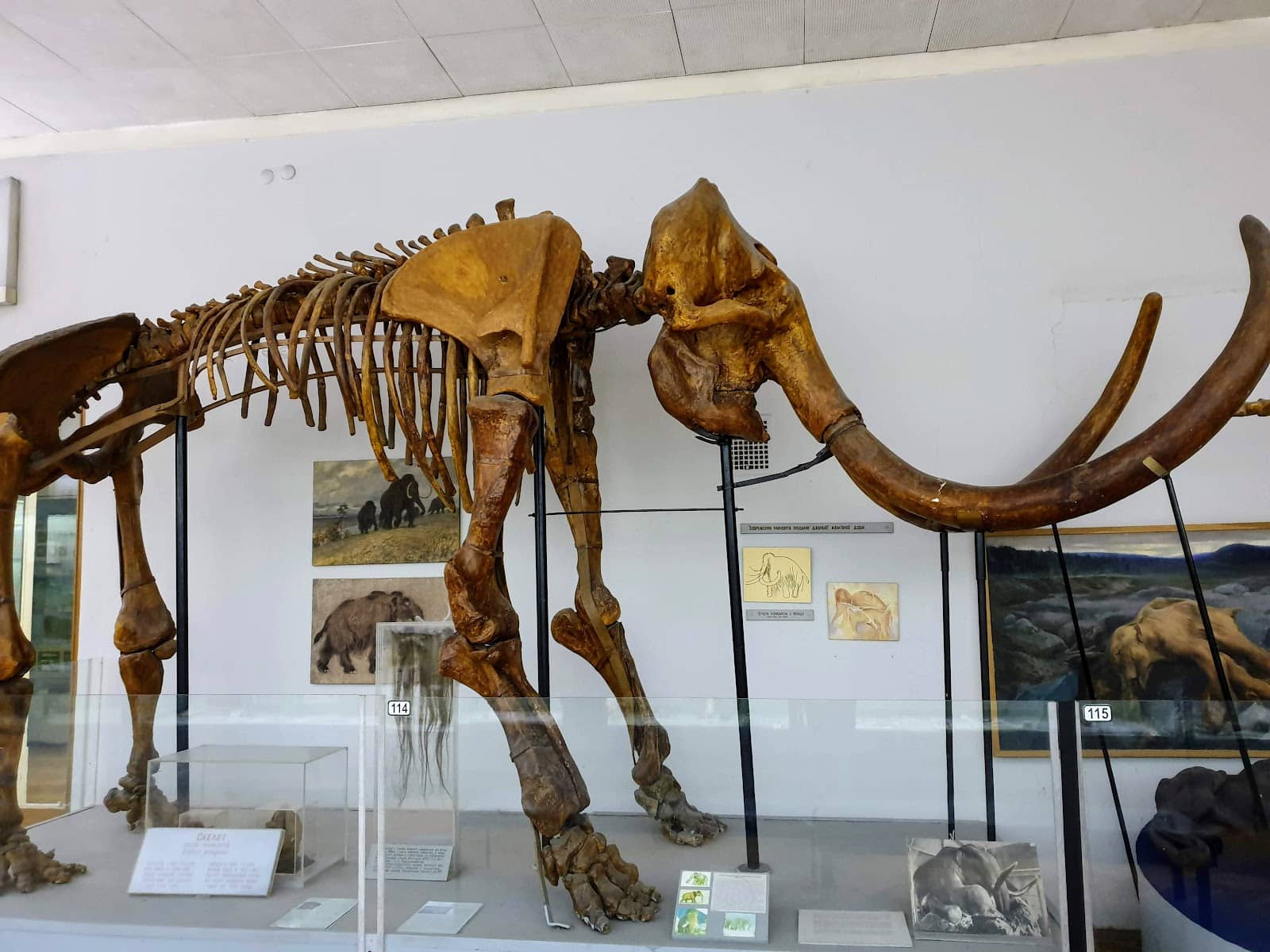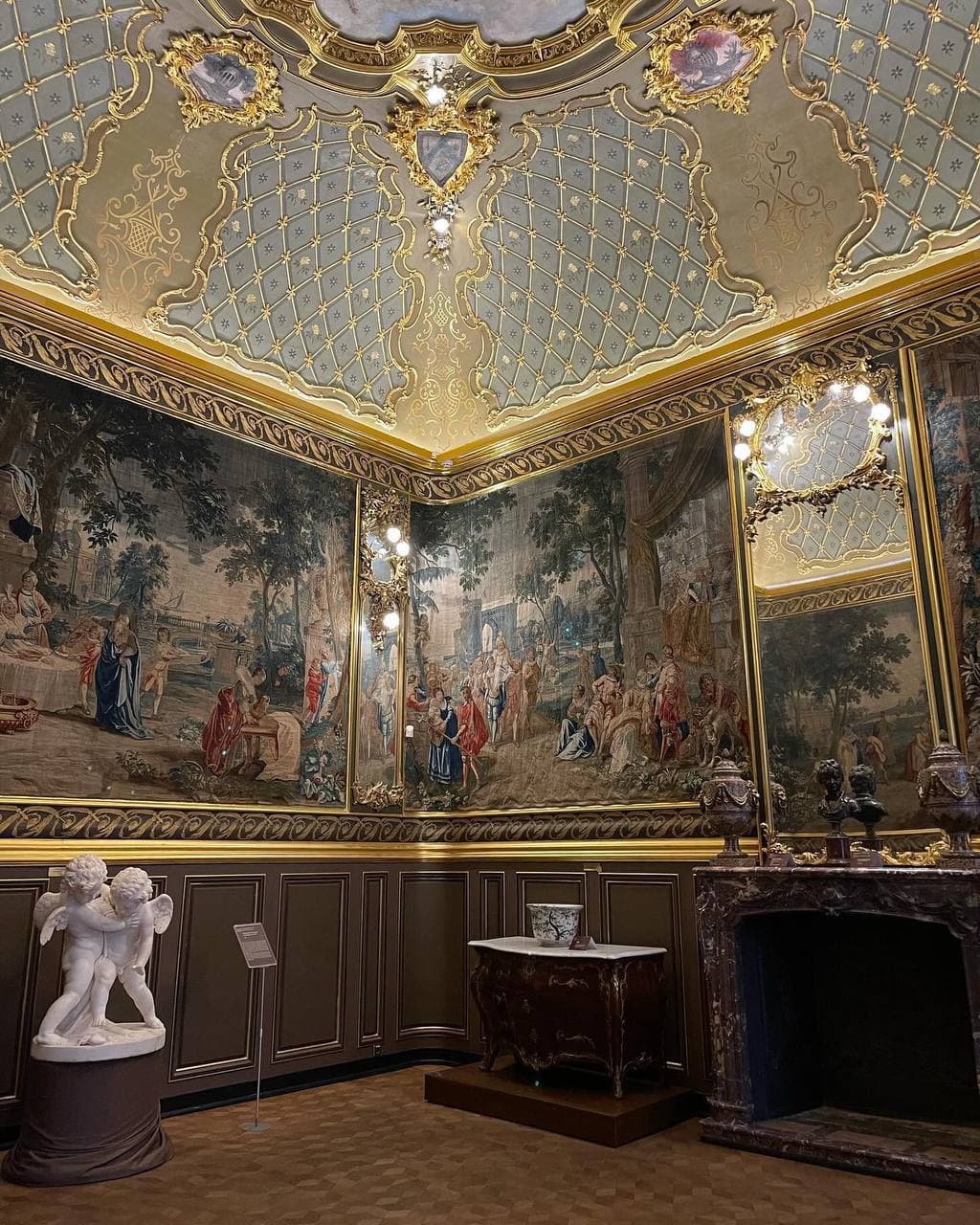
National Museum of Natural History
Explore Earth's wonders, from dinosaur fossils to ocean depths, in this vast, free museum.

Highlights
Must-see attractions

Social
From TikTok & Reddit
Best Time
Fewer crowds, more relaxed viewing

National Museum of Natural History
Best Time
Fewer crowds, more relaxed viewing

Highlights
Must-see attractions
Explore Earth's wonders, from dinosaur fossils to ocean depths, in this vast, free museum.
"A must-visit for nature and history lovers, offering endless discovery across four floors."

Free Admission! 🎉
Entry to the National Museum of Natural History is free for everyone. No tickets needed!
Wear Comfy Shoes :athletic_shoe:
You'll be on your feet for hours exploring four floors of exhibits.

Highlights
Discover the most iconic attractions and experiences

David H. Koch Hall of Fossils
Fossil Hall
Marvel at dinosaur skeletons and ancient life. A must-see for paleontology enthusiasts!

Ocean Hall
Ocean Hall
Explore the wonders of marine life, from deep-sea creatures to coral reefs. Features a massive whale model.

Butterfly Pavilion
Lower Level
Immerse yourself in a tropical environment with live butterflies. A magical experience for all ages.

Human Origins Hall
Human Origins Hall
Trace the evolution of humankind and discover our ancient ancestors.
Plans like a pro.
Thinks like you
Planning Your Visit
Free Entry & Hours
Plan Your Visit Duration
Best Times
Insider Tips
from TikTok, Instagram & Reddit
Free Admission! 🎉
Entry to the National Museum of Natural History is free for everyone. No tickets needed!
Wear Comfy Shoes :athletic_shoe:
You'll be on your feet for hours exploring four floors of exhibits.
Butterfly Pavilion Tickets
Tickets for the Butterfly Pavilion are purchased on-site and can sell out. Book early!
Translation Challenges :speech_balloon:
Many exhibits lack English translations. Use Google Lens or a translation app for help.
Tips
from all over the internet
Free Admission! 🎉
Entry to the National Museum of Natural History is free for everyone. No tickets needed!
Wear Comfy Shoes :athletic_shoe:
You'll be on your feet for hours exploring four floors of exhibits.
Butterfly Pavilion Tickets
Tickets for the Butterfly Pavilion are purchased on-site and can sell out. Book early!
Translation Challenges :speech_balloon:
Many exhibits lack English translations. Use Google Lens or a translation app for help.
Check Exhibit Schedules
Special exhibits like 'Lights Out' or 'Cellphones' have specific timings.
What Travellers Say
Reviews Summary
Visitors praise the National Museum of Natural History for its vast and fascinating collections, especially the dinosaur skeletons and ocean life exhibits. It's considered a great, free educational outing for families and science enthusiasts. However, some reviewers note that exhibits can feel dated and lack English translations, which can be a barrier for international visitors.
"Good place for nature, historical lovers. A lot of animals and different lifeforms. 4 floors! So keep patient and be strong! As for me, better to visit in cold times (autumn, winter). Anyway you have a lot of fun and new knowledge."
Rostislav Sheptykin
"One of the best places in Kyiv to visit with kids. Entrance is free for kids under 6. Despite the fact that Museum is old and not using new technologies, it is still super exciting. U can easily spend 3 hours over there. I really hope they plan to add English signs as i saw some foreigners. It was fun to find at home after the visit picture from my mother's childhood (1971) with tiger and they still have exactly the same tiger"
Mallala
"There's absolutely awesome collection of many-many species, but condition of all the staff it's really bad. Incomparable to Europe museums.
Any way it's perfect place to come with children and friends, a special if you interesting in a Science.
Get ready to spend here at least a 3 hours, the museum is 4 huge flours."
Skiba Fedor
What People Like
What People Dislike
Frequently Asked Questions
🚇 🗺️ Getting There
The museum is located at 10th St. & Constitution Ave. NW, Washington D.C. 20560. It's easily accessible by Metro (Smithsonian station on the Blue and Orange lines) or bus. Paid street and garage parking are available nearby.
Yes, there is paid street and garage parking available in the vicinity. However, parking can be expensive and fill up quickly, especially on weekends.
Absolutely! The Smithsonian Metro station is the closest stop. Several bus routes also serve the area, making public transport a convenient option.
The museum is generally accessible for wheelchairs, with elevators available to reach all floors. It's recommended to check their official website for the most up-to-date accessibility information.
Arriving early in the morning on a weekday is your best bet to avoid the largest crowds. Weekends and holidays are significantly busier.
🎫 🎫 Tickets & Entry
Admission to the National Museum of Natural History is completely FREE! You can explore its vast collections without purchasing a ticket.
The museum is typically open daily from 10:00 AM to 5:30 PM. However, it's always a good idea to verify the exact hours on their official website before your visit, as they can change.
For general admission, no advance booking is required as it's free. However, for special exhibits like the Butterfly Pavilion, tickets are often purchased on-site and timed entry slots may apply.
General admission is always free. While there aren't specific 'free days' beyond the daily free entry, Tuesdays are noted as free for the Butterfly Pavilion, though tickets are still required.
Typically, re-entry policies can vary. It's best to check with museum staff upon your initial entry or consult their website for specific guidelines on same-day re-entry.
🎫 🧭 Onsite Experience
Don't miss the Hall of Fossils (with dinosaur skeletons!), the Ocean Hall (featuring a giant whale model), the Butterfly Pavilion, and the Human Origins Hall.
Most visitors recommend allocating at least 3-4 hours to explore the four floors. You could easily spend a full day if you're very interested in natural history.
Yes, it's a fantastic place for kids! The exhibits are engaging, and many find the dinosaur skeletons and live butterflies particularly exciting.
The museum often offers guided tours, but availability and schedules can vary. Check their official website or inquire at the information desk upon arrival for current tour options.
Photography for personal use is generally allowed in most areas, but tripods are often prohibited, especially in the Butterfly Pavilion. Always check signage for specific restrictions.
🍽️ 🍽️ Food & Dining
Yes, the museum has a cafe where you can purchase food and drinks. It's a convenient option for a quick bite during your visit.
Generally, outside food and drinks are not permitted inside the exhibit halls. There might be designated areas for picnics, but it's best to confirm this with museum staff.
The National Mall area surrounding the museum has numerous food trucks and restaurants offering a variety of cuisines. You'll find plenty of options within walking distance.
Museum cafes can sometimes be pricier than external options. It's advisable to check their menu and prices online if you're on a budget, or consider packing snacks.
Cafes within museums typically offer a range of options, often including vegetarian choices. Vegan options might be more limited, so it's worth inquiring directly at the cafe.
📸 📸 Photography
Yes, personal photography is generally permitted in most areas of the museum. However, flash photography might be restricted in certain exhibits to protect the artifacts.
Tripods are typically not allowed inside the museum, especially in high-traffic areas or specific exhibits like the Butterfly Pavilion. Always check for signage or ask staff.
The grand Rotunda with its iconic elephant, the Ocean Hall with the whale, and the intricate architecture of the building itself are popular photo spots. The Butterfly Pavilion also offers unique photo opportunities.
Commercial filming or extensive video recording usually requires prior permission. For personal vlogs or casual filming, check for any specific restrictions on equipment like drones or professional lighting.
For research purposes, it's best to contact the museum's public relations or collections department in advance to inquire about specific photography permissions.
For Different Travelers
Tailored advice for your travel style
👨👩👧 Families with Kids
Tips for families: Wear comfortable shoes, as there's a lot of walking. Consider packing snacks or utilizing the museum cafe for a break. Be prepared for potential crowds, especially on weekends. While many exhibits are visually engaging, some may lack English translations, so a translation app can be helpful for older children interested in reading the details.
🤓 Science Enthusiasts & Students
While the museum's core scientific content is robust, be aware that some exhibits may not be as interactive as modern science centers. However, the sheer volume of specimens and the historical context provided make it an invaluable learning resource. Take advantage of any available guided tours or lectures that might offer deeper insights into specific scientific disciplines.
📸 Photographers & Art Lovers
Remember that tripods are generally not allowed, so be prepared to shoot handheld or use image stabilization. Flash photography may also be restricted in certain areas to protect delicate exhibits. Focus on capturing the scale of the exhibits, the intricate details of specimens, and the overall atmosphere of wonder within the museum.
Deep Dives
In-depth insights and expert knowledge
Navigating the Collections
Many visitors note that the museum, while rich in content, can feel a bit dated in its presentation, with a lack of modern interactive displays. However, the sheer volume and quality of the specimens are undeniable. For those interested in a more immersive experience, the Butterfly Pavilion provides a tropical escape, though it requires a separate ticket and has specific entry times.
Pro-tip: Since English translations can be sparse, downloading a translation app like Google Lens beforehand can significantly enhance your understanding of the exhibits. This allows you to point your phone at labels and get instant translations, making the visit more informative and enjoyable, especially for international travelers.
The Butterfly Pavilion Experience
It's important to note that the Butterfly Pavilion has its own admission fee, and tickets are typically purchased on-site. Due to its popularity, it's advisable to secure your tickets as soon as you arrive at the museum, as timed entry slots can fill up quickly. Visitors should also be aware of specific rules within the pavilion, such as the prohibition of strollers and tripods, to ensure the safety and well-being of the butterflies and the preservation of the exhibit.
Despite the extra cost and logistical considerations, many visitors find the Butterfly Pavilion to be a highlight of their museum visit. The vibrant colors and gentle fluttering of the butterflies create a serene and memorable encounter with nature. It's a fantastic opportunity for photographers and nature lovers alike to capture stunning close-up shots.
Historical Context and Preservation
While the museum's historical significance is undeniable, some visitors have noted that certain exhibits could benefit from modernization. The sentiment is that while the core scientific content is excellent, the presentation might not always align with contemporary expectations for interactive and technologically advanced museum experiences. This is particularly evident in the lack of widespread English signage, which can be a barrier for international visitors.
Despite these observations, the museum continues to be a vital resource for learning and discovery. The dedication of its staff to maintaining and showcasing these invaluable collections ensures that future generations can continue to be inspired by the wonders of natural history. The enduring appeal of exhibits like the dinosaur skeletons speaks to the timeless fascination humans have with the past.






Social
from TikTok, Instagram & Reddit